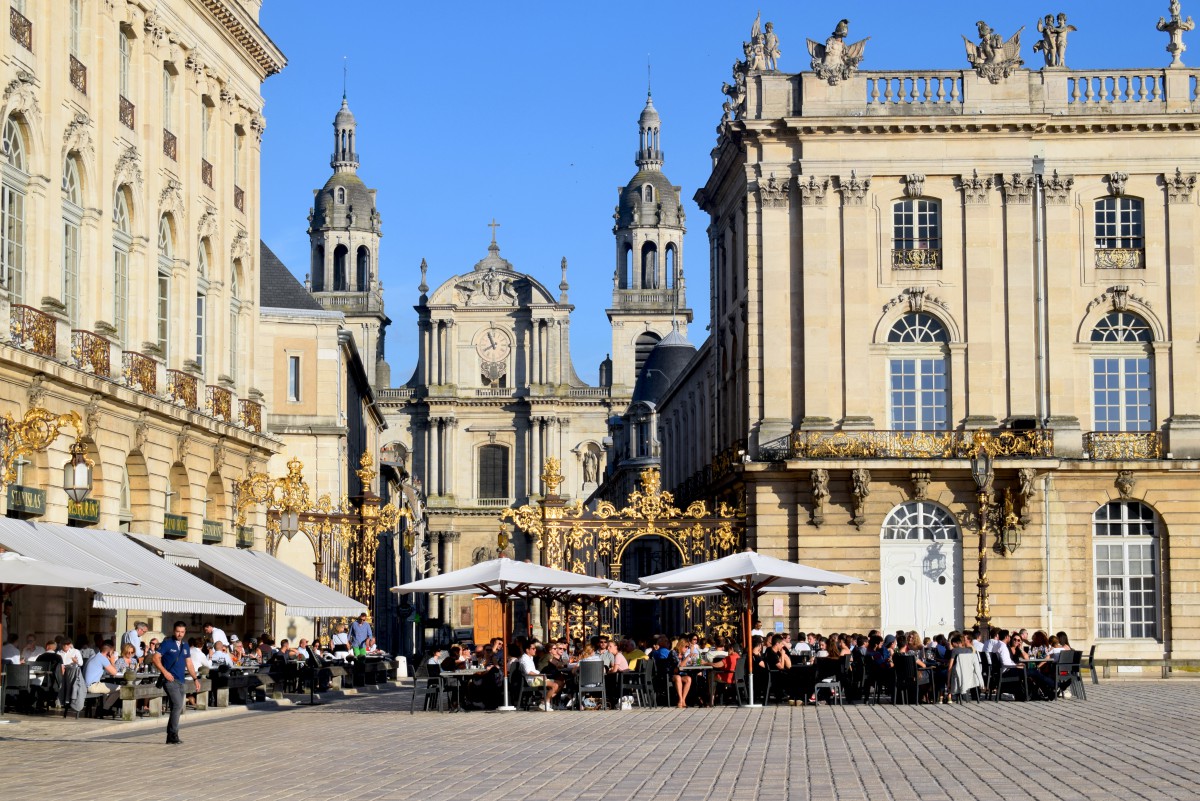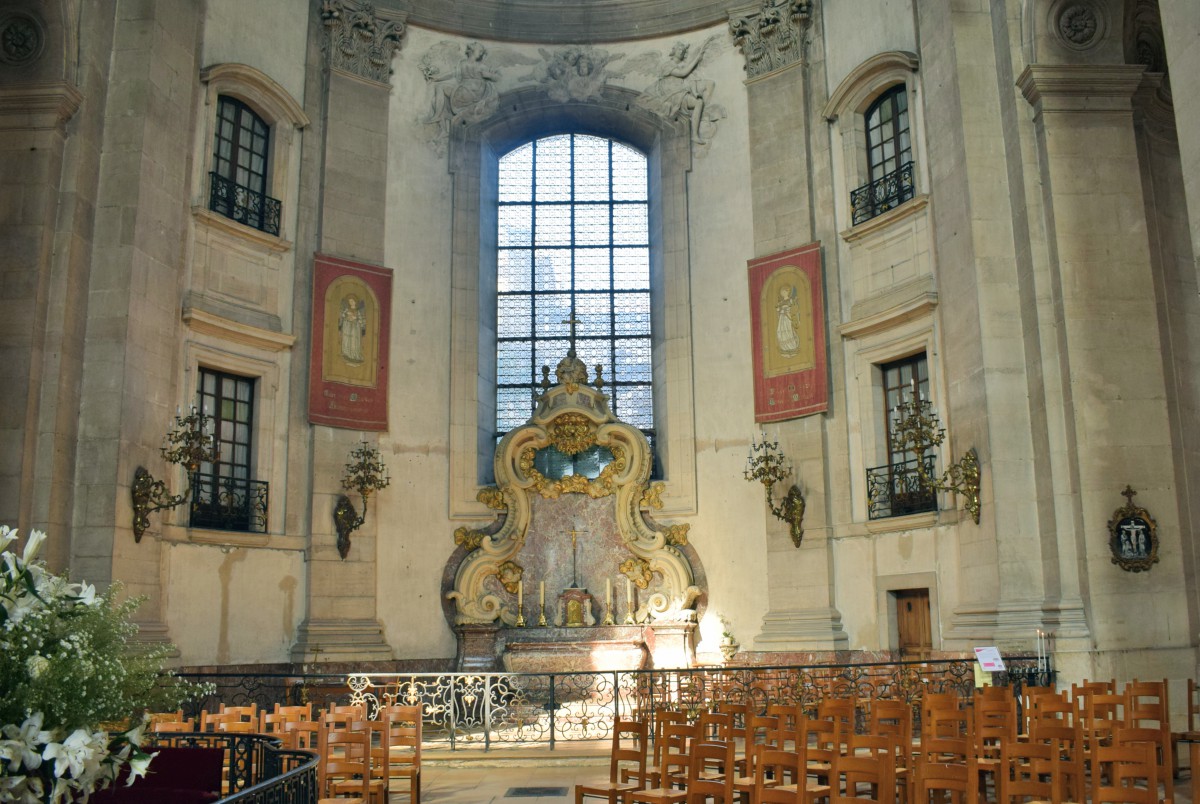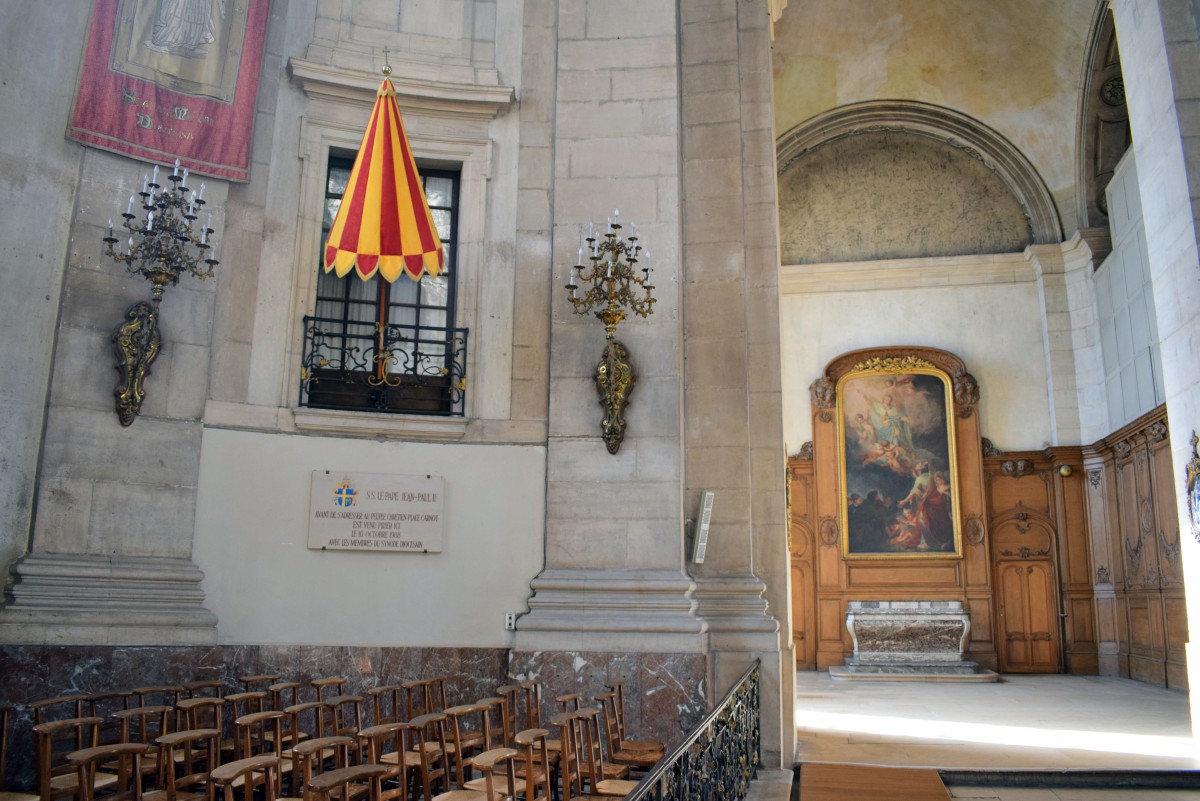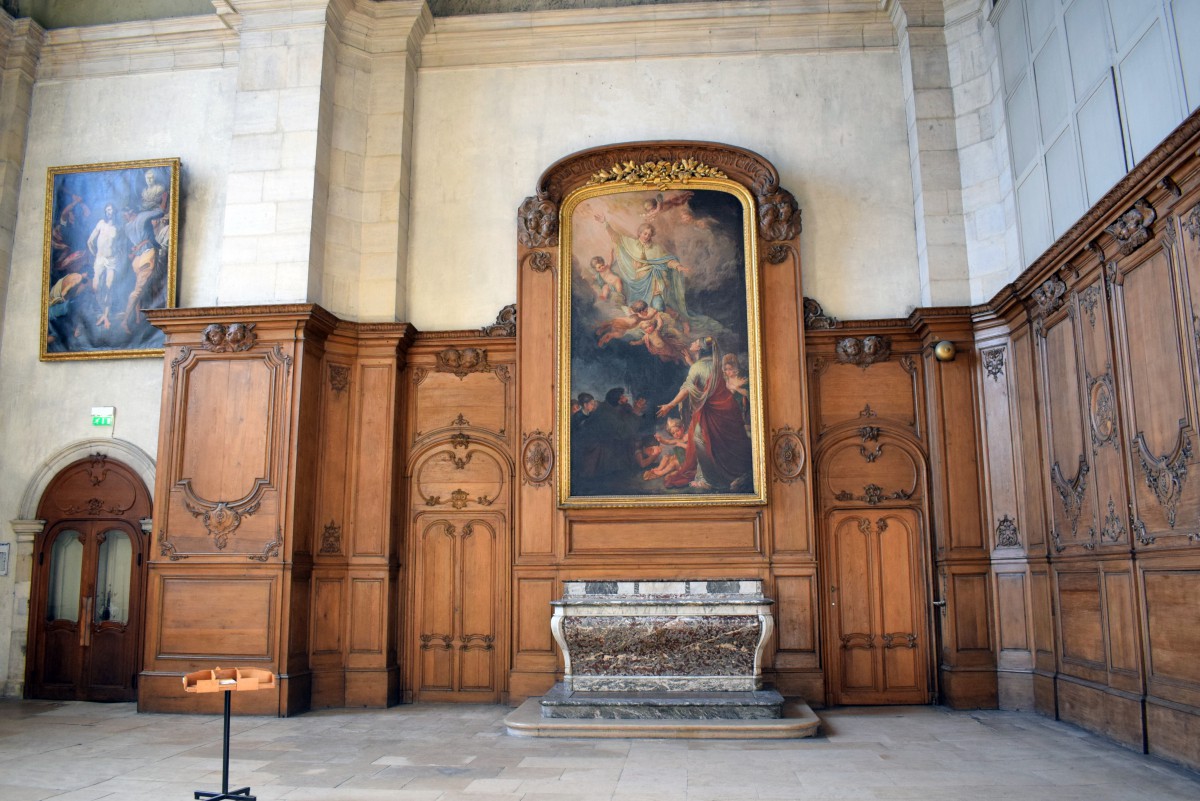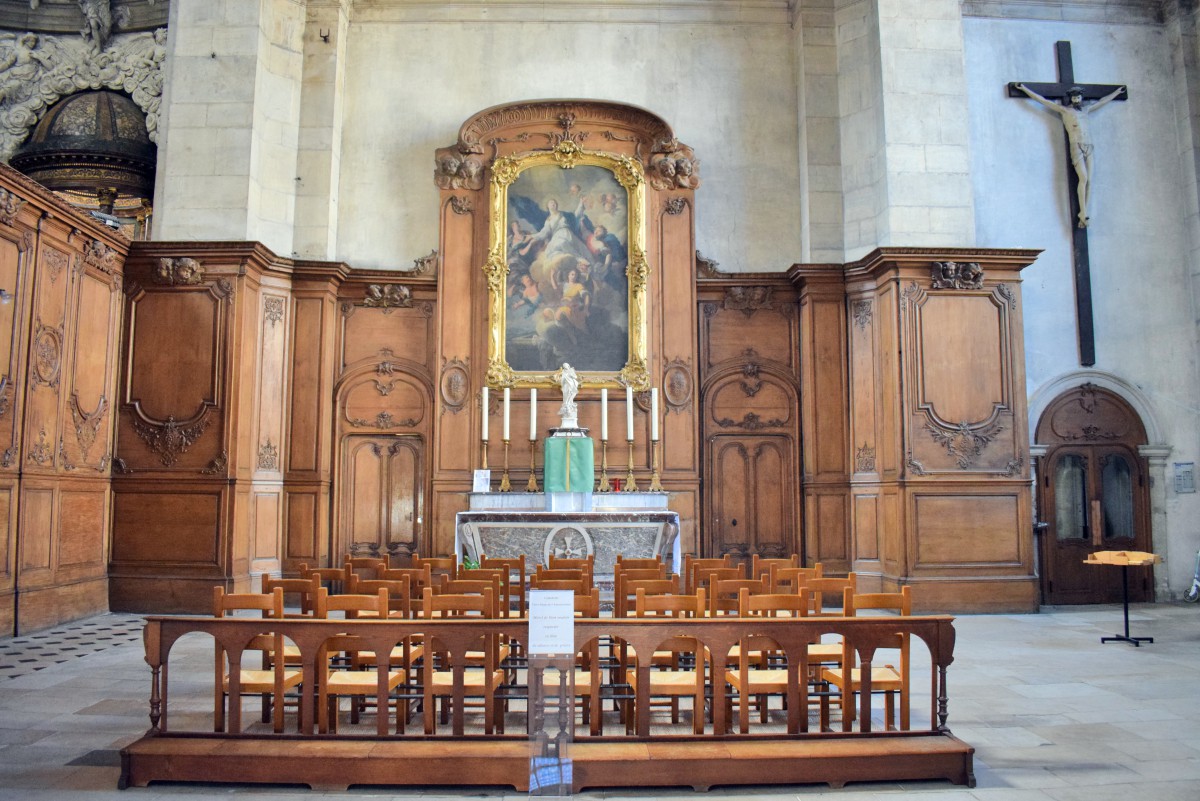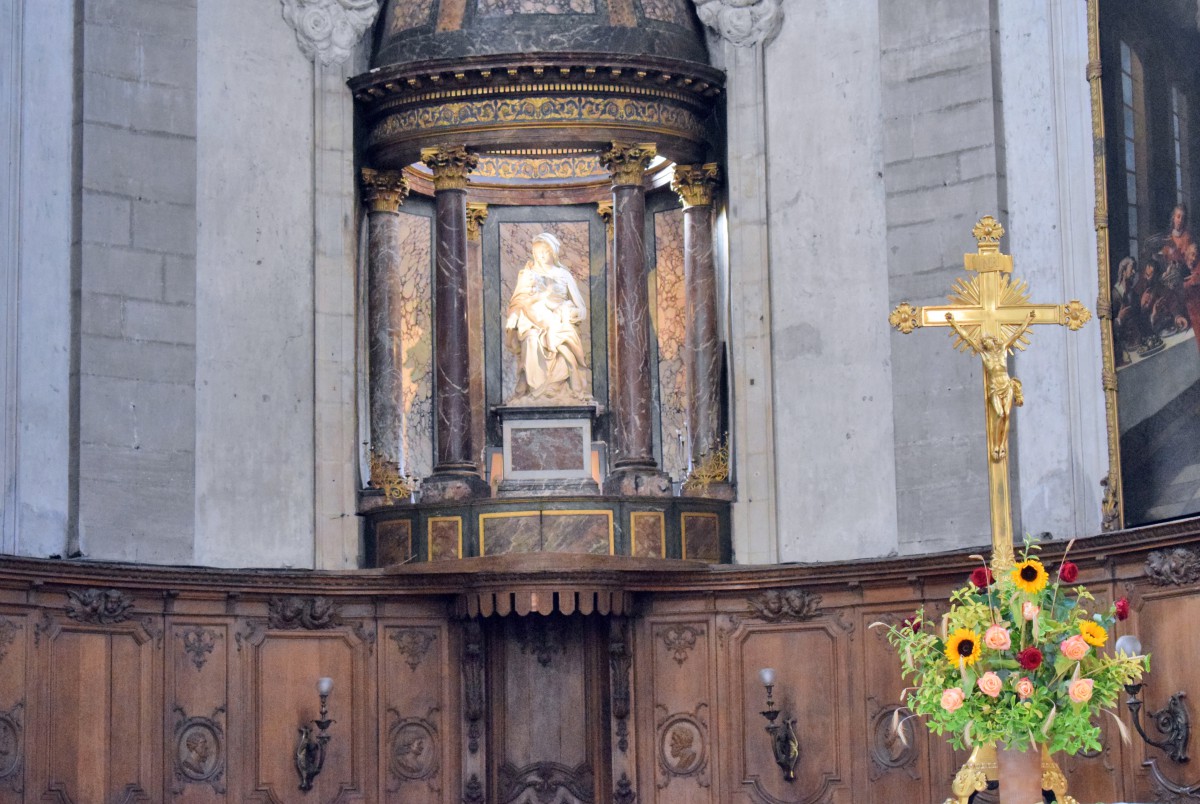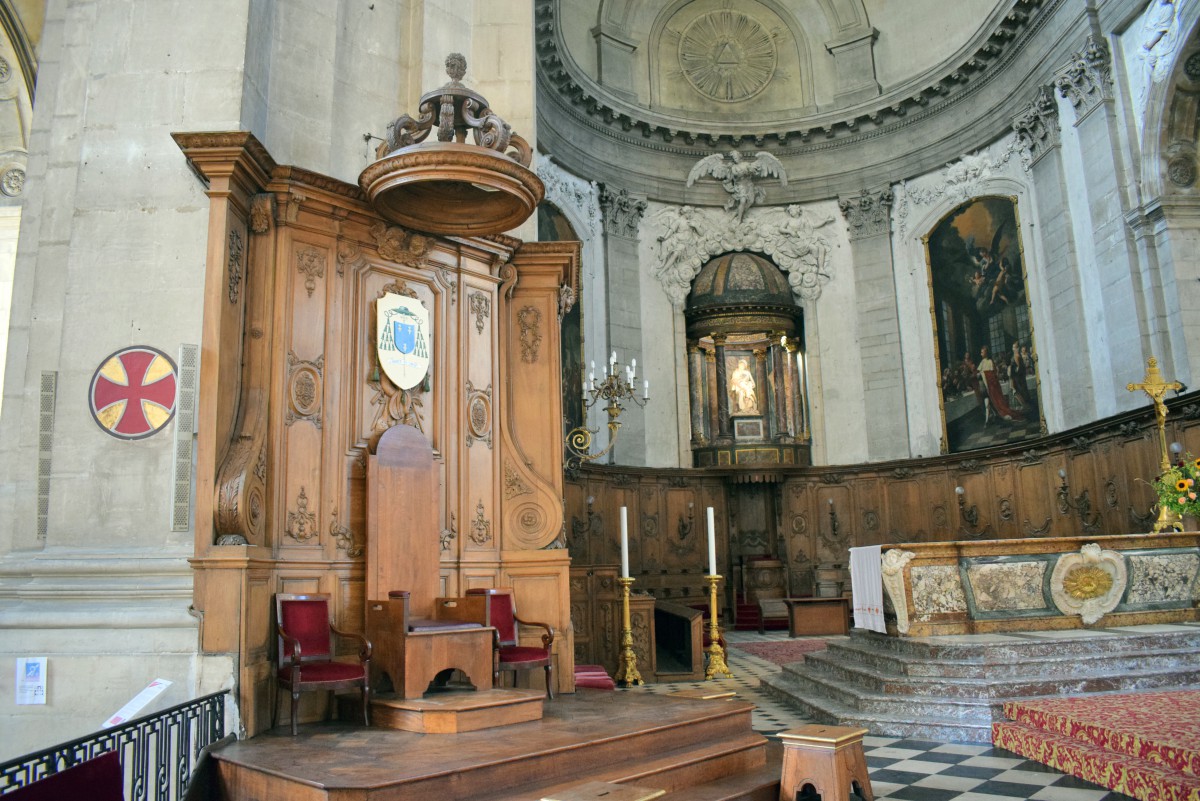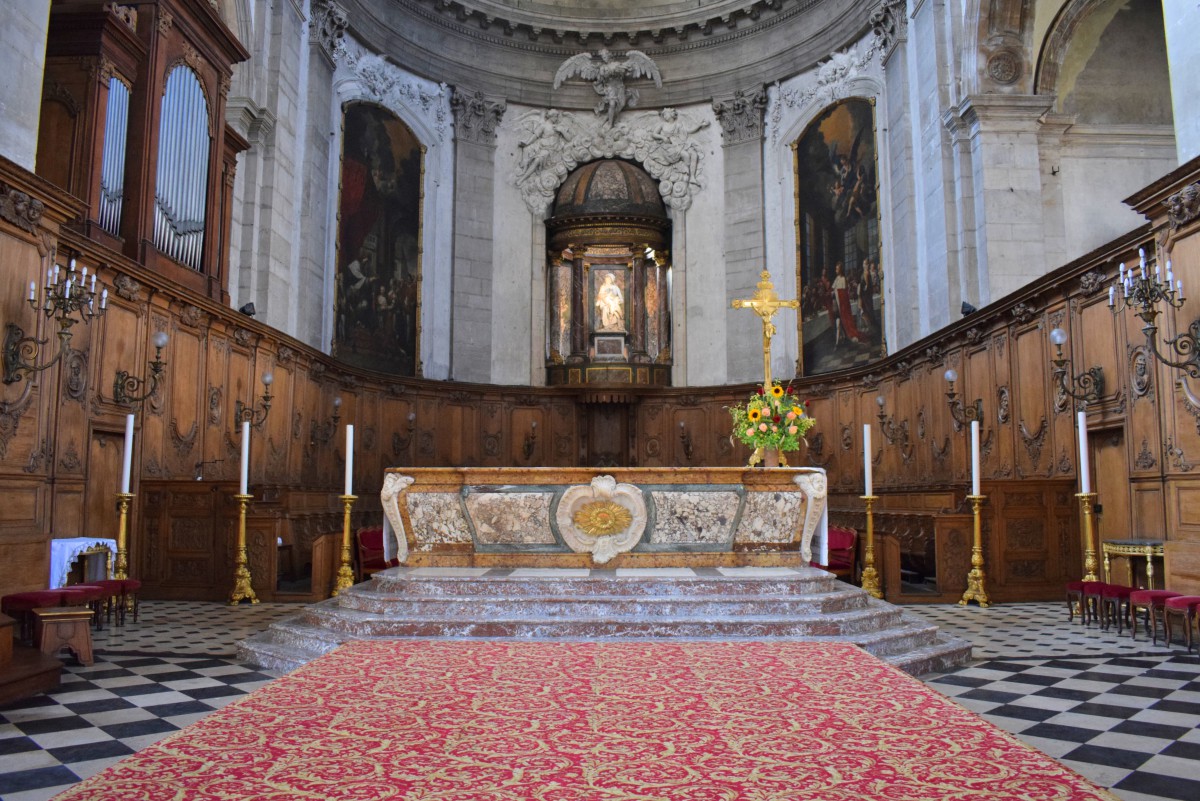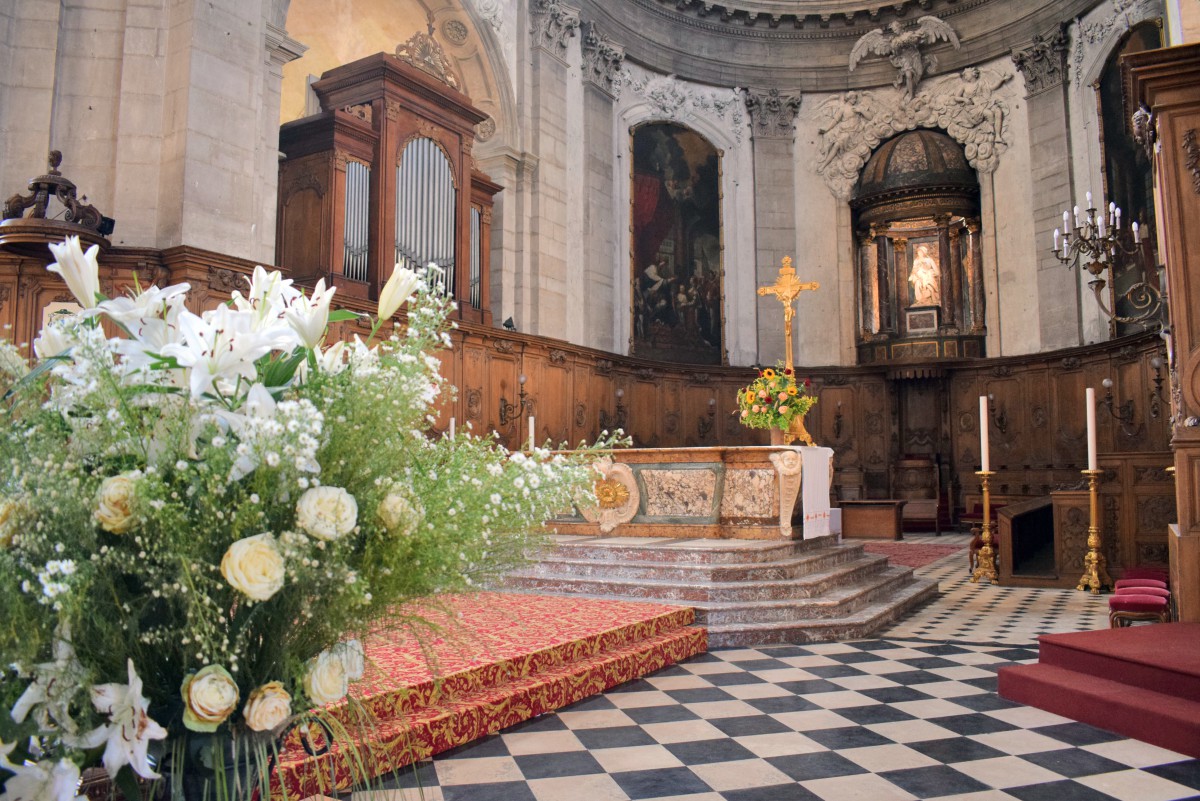Nancy Cathedral is part of the grand 18th century district which was completed by Duke Stanislas. The sanctuary is an interesting mixture of neo-classical and baroque styles, echoing the neighbouring Place Stanislas. Although it shares no similarity with the Gothic cathedrals of Toul or Metz, I found it quite interesting to venture inside…
Historic Overview of Nancy Cathedral
The Cathedral was built at the beginning of the 18th century by architects Jules Hardouin-Mansart and Germain Boffrand. The church’s intersesting features lie in the railings by Jean Lamour, a cupola painted by Jacquard and an organ, which has been classified as an “historical landmark”. Additionally, several paintings by local artists from the 17th and 18th century are exhibited.
Historically, the presence of the cathedral in Nancy is due to the personal ambitions of the Dukes of Lorraine. When the Three Bishoprics of Toul, Metz and Verdun in Lorraine were integrated into the Kingdom of France in the 16th century, the territory of the Dukes of Lorraine had no town with any kind of religious importance. Nancy’s closest bishopric town, Toul, suffered from a fading influence. As for the upheaval of the Reformation, it did not fall to have an effect on the behaviour of the clergy in Lorraine.
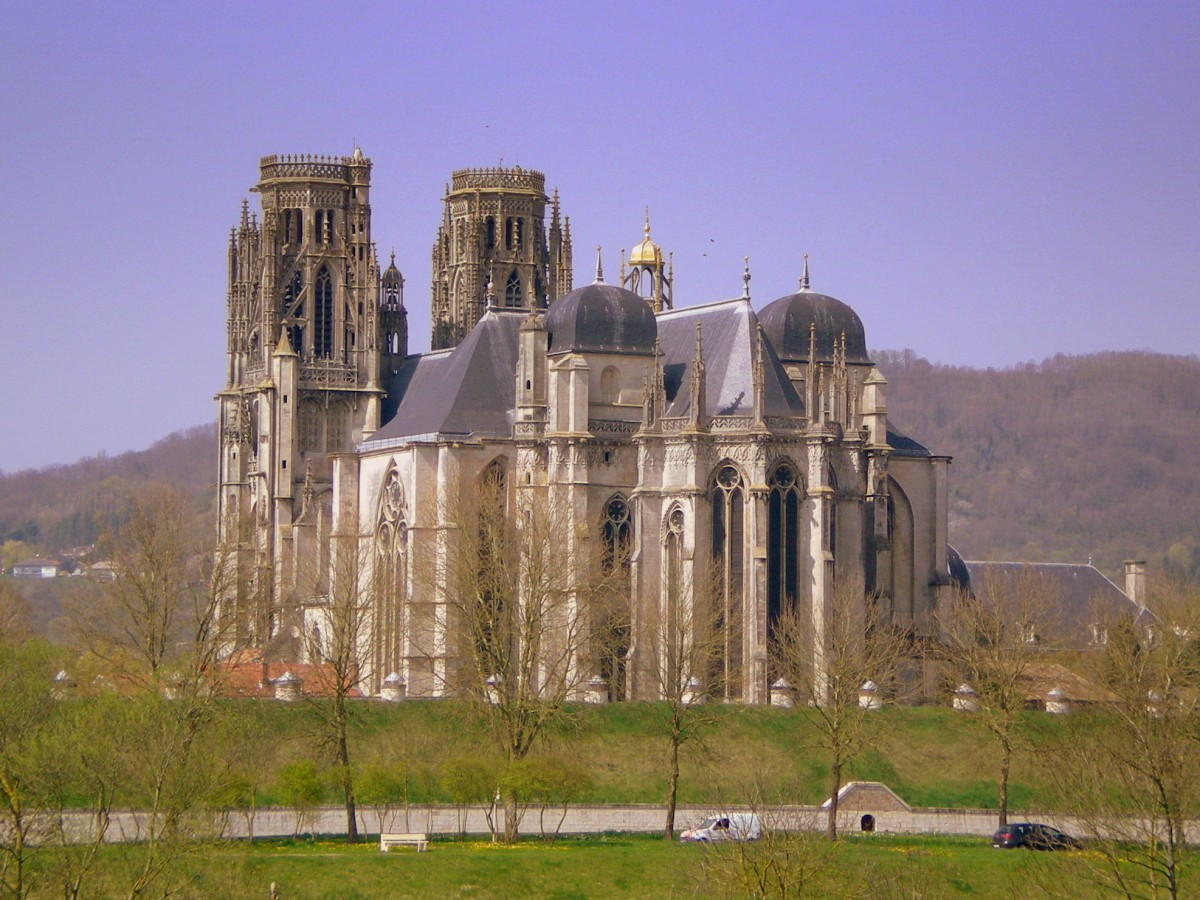
Duke Charles III did indeed dream of reinforcing the importance of his states by obtaining a diocese in Nancy from the Pope, to compete with the Three Bishoprics. But in his attemps, he only succeeded in getting a Primatial chapter, immediately dedicated to Our Lady of the Annunciation. The Duke also managed to transfer into the Primatial the relics of St. Sigisbert, King of Austrasia during the 7th century.

But the Thirty Years War (1618-1648) delayed the construction of the church until it was resumed in the 17th century when Prince François, laid the first stone of the new Primatial, commissionned from Italian architect Giovanni Betto.
But from 1709 to 1715, work was again suspended. At the time of the construction, the famous French architect Jules-Hardouin Mansart, serevely critiziced Betto’s plans, and proposed the addition of a lantern-dome at the transept crossing, which would balance the volumes better and add a majestic touch to the church. Probably for financial reasons the dome was not erected… if it was, this would have rendered to Nancy an impressive landmark.
When Betto died in 1722, leaving the Cathedral unfinished, the notorious architect Germain Boffrand was commissionned to lead the work to its end. Boffrand had to work from what his predecessor had been building, which was not an easy task.
The facade of the Primatial, with their small towers was designed in order the make visible the large dome initially planned.
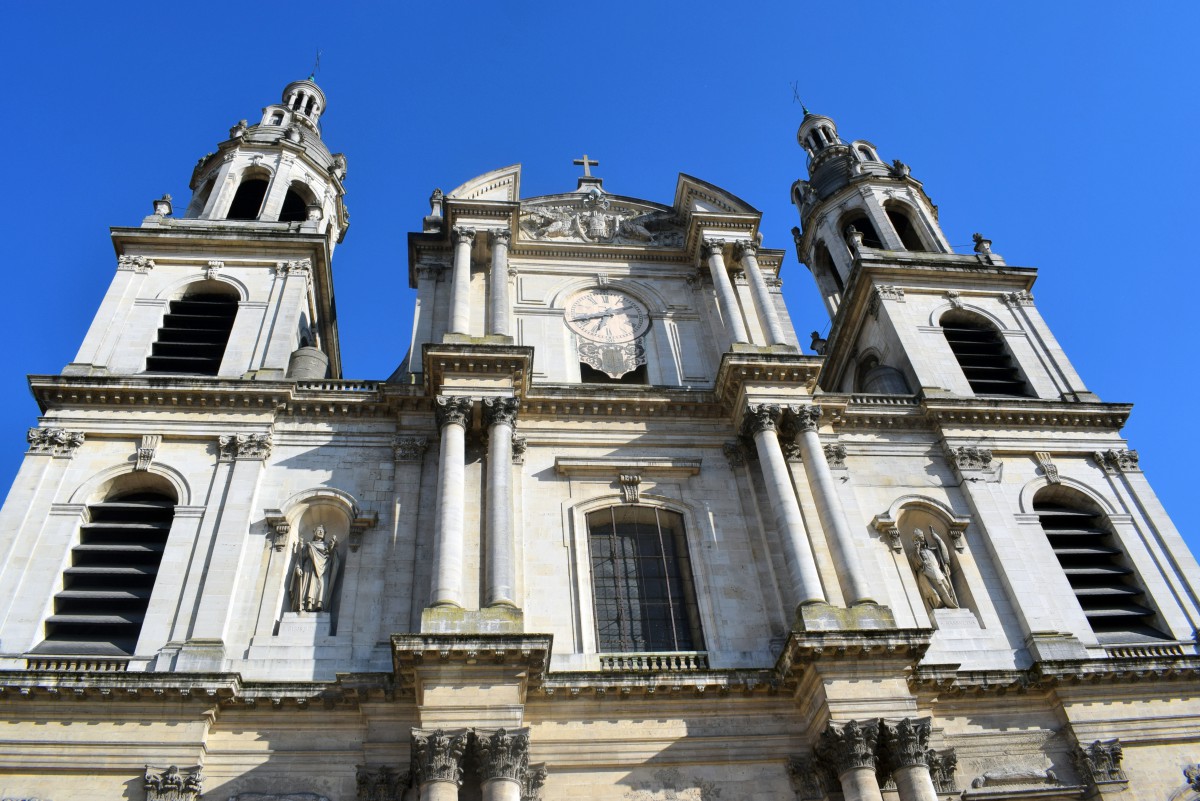
But when it was decided that the dome was too expensive to build, the harmony of the facade was compromised. Boffrand found a way of erecting a third level in the centre of the facade between the two towers, topped by a rounded pediment carrying the Duke of Lorraine’s coat of arms and surmounted by a cross.
Then Boffrand added the two elegant cylindric lanterns (1729) on top of the squared based towers, at a height of 78 metres.
In November 1742, the first mass was celebrated in the Primatial while the interior works continued.
During the Revolution, the Cathedral was desecrated and became a Temple for the Cult of Reason. Even if the facade sculptures were destroyed, the building nevertheless became a refuge of religious art works belonging to churches that had been dismantled. The organ survived from destruction thanks to a patriotic organist who performed the “Ah! ça ira” anthem of the French Revolution.
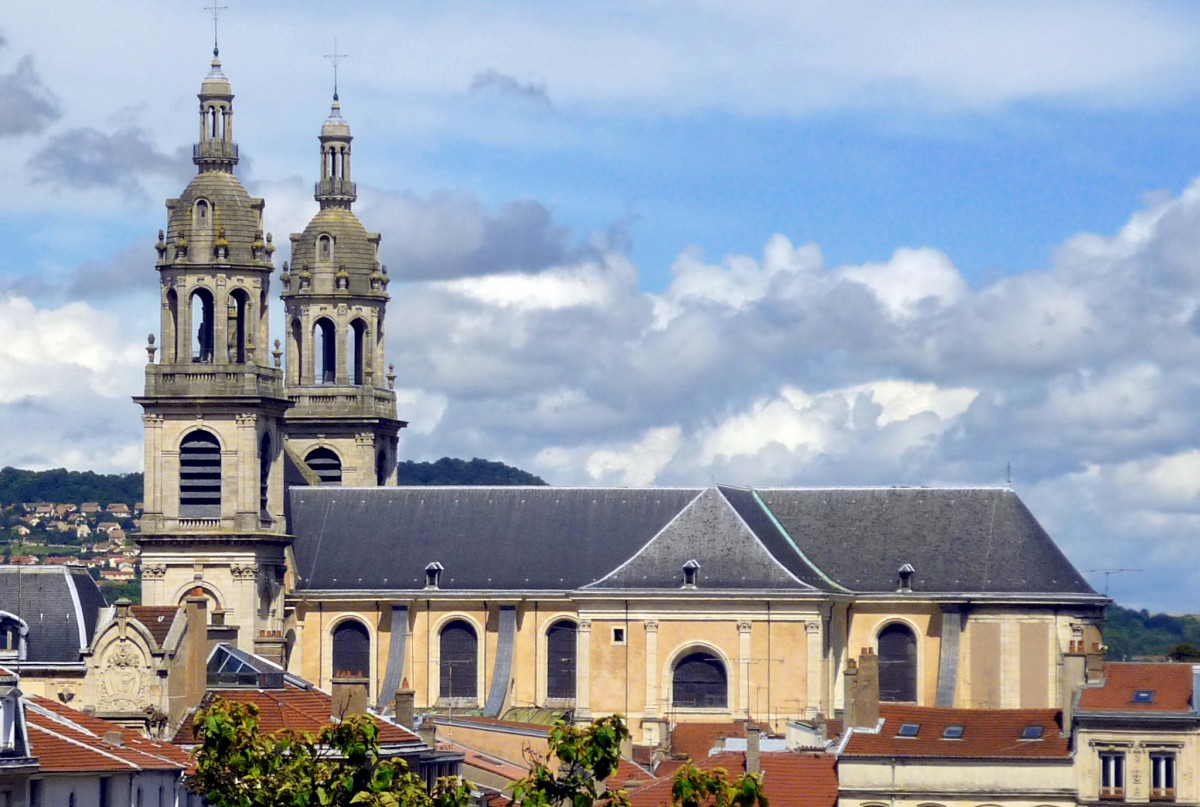
The Cathedral was elevated to the rank of basilica, a privileged church in 1867.
The interior of Nancy Cathedral
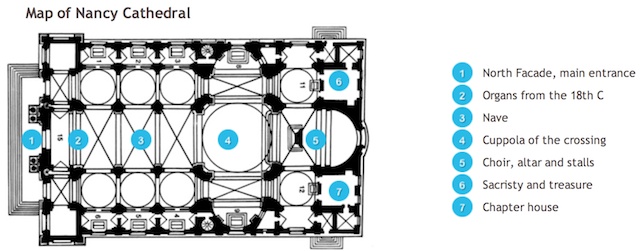
As always when you enter in a cathedral in Europe, the nave often gives an impressive feeling to the sanctuary.

A number of informative panels reveal things you wouldn’t have guessed.
Look for the pulpit:
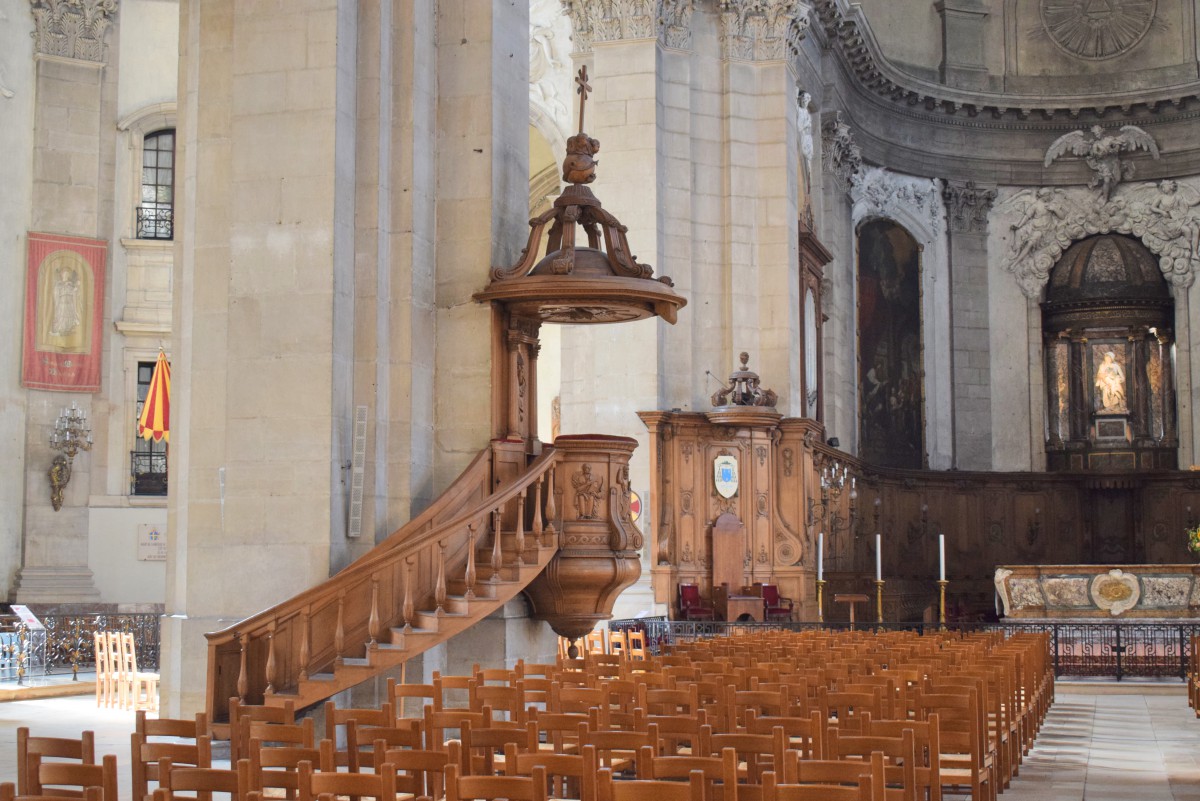
The many side chapels:
The lateral chapels are closed by rococo railings executed by Jean Lamour and his apprentice François Jeanmaire. They are similar to those in Place Stanislas.
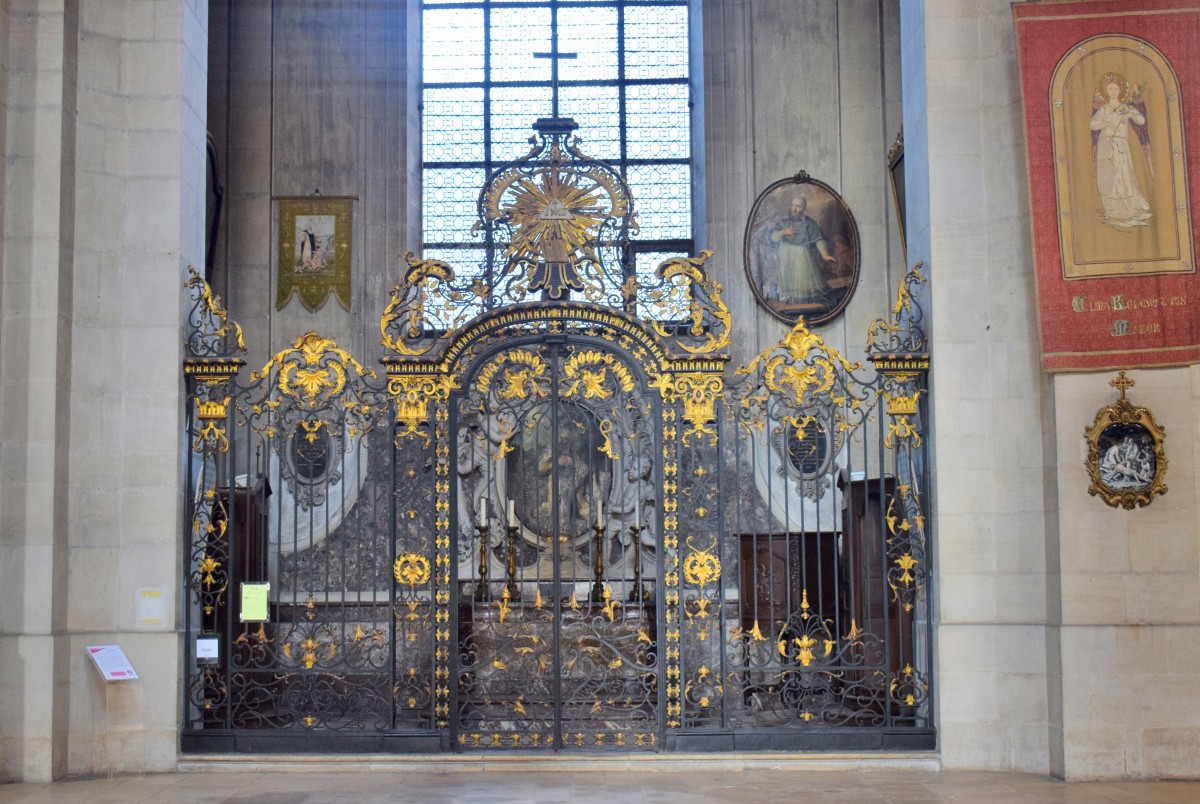
In the nave are large archways separated by a colossal order of Corinthian pilasters. In their spandrels are sculpted angels that are carrying the Virgin’s symbols, inspired by the Litanies, the Ecclesiastes and the Song of Songs.
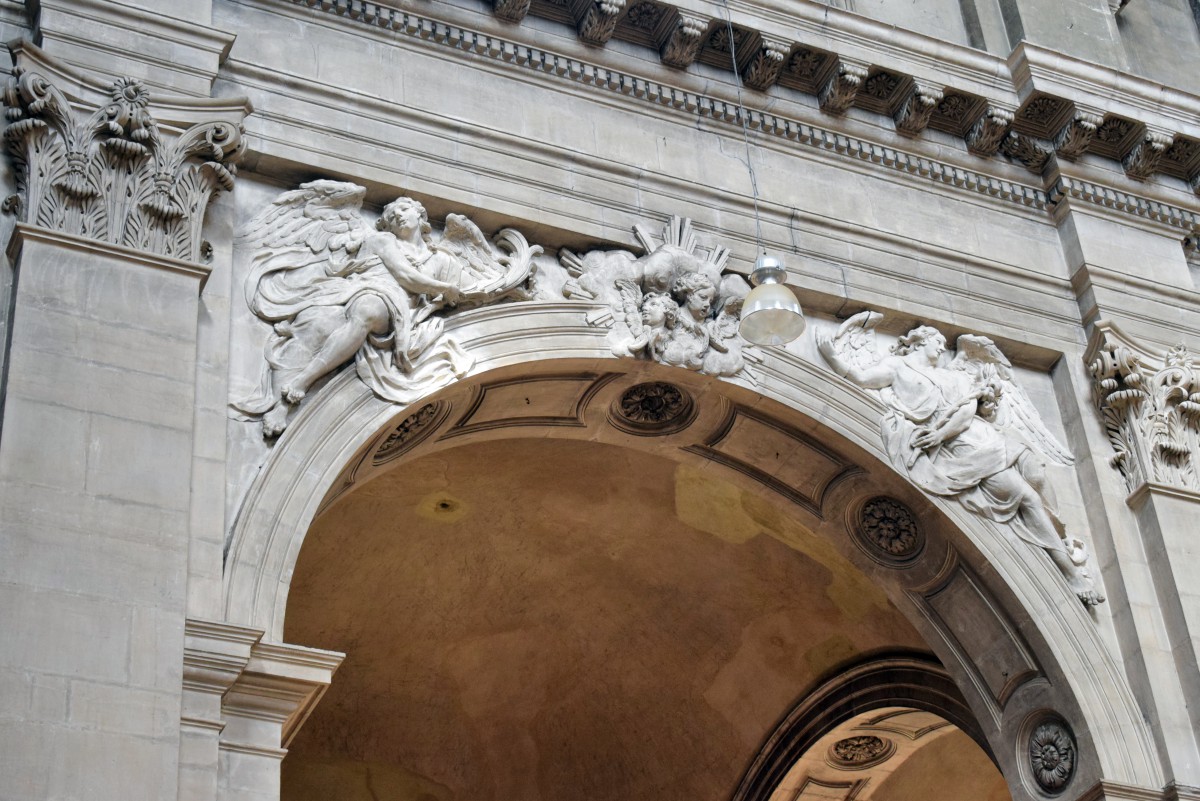
In the transept crossing you can admire a relatively modest cupola (when compared to Mansart’s initial plans), built on pendentives.

From 1723 to 1727, Joseph Jacquart painted a large fresco depicting the celestial glory, consisting of 150 figures symbolising the Old and New Testaments, and the great Doctors of the Church, all gathered around the Holy Trinity. The cupola is 15 metres in diameter and is best admired when the occasional light is projected straight onto it.
Three large screens holding the paintings of Claude Charles, a native of Nancy, decorates the Cathedral’s apse. They depict the crowning of Saint Sigisbert (left) and Saint Sigisbert helping the poor (right).
The painting of the middle in-between shows flying angels in the thick clouds. A large Christ on the Cross, possibly from Ligier Rigier, is fixed on the wall of the right minor apse.
In the loft above the Cathedral entrance stands a large 16 foot organ built by the Dupont brothers in 1757. The reputed organ builder Aristide Cavaillé-Coll expanded its capacity to 32 feet in 1861.
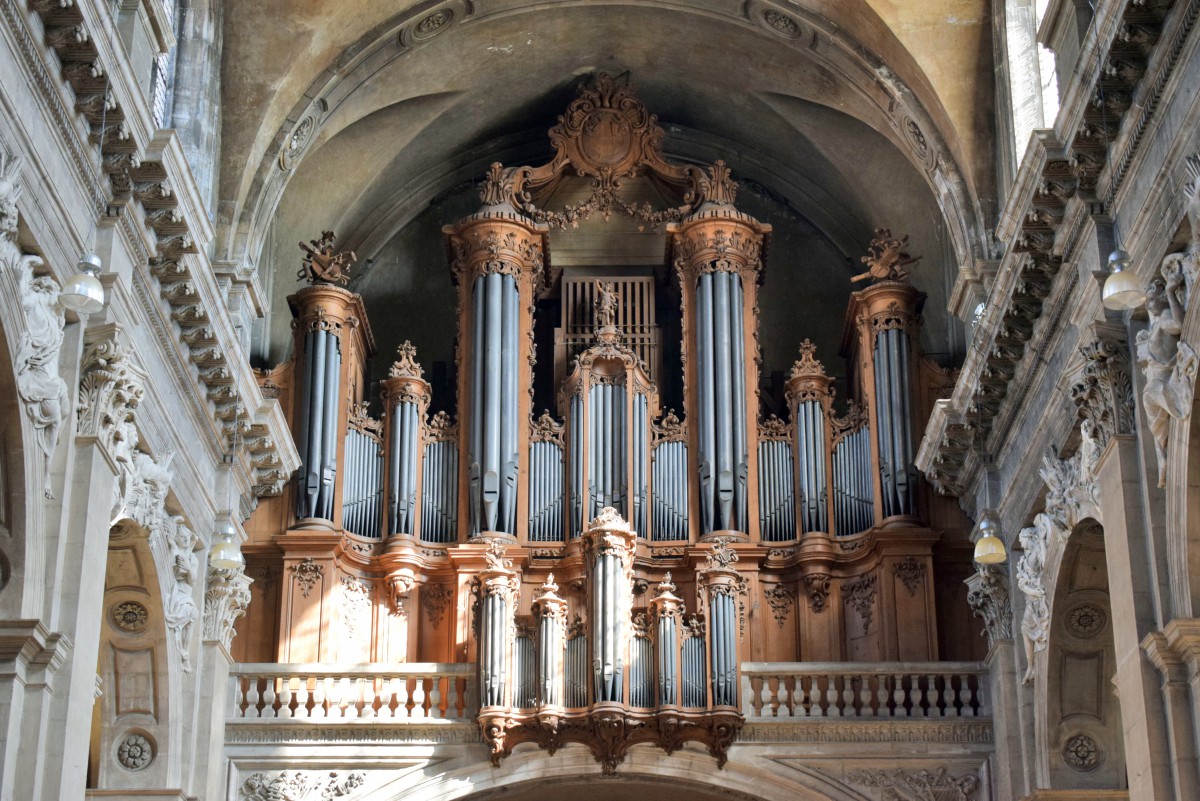
The nave leads to the majestic choir and its main altar:
Did you like what you read? If so, please share this article on Facebook or twitter! 🙂
Pin it for later:
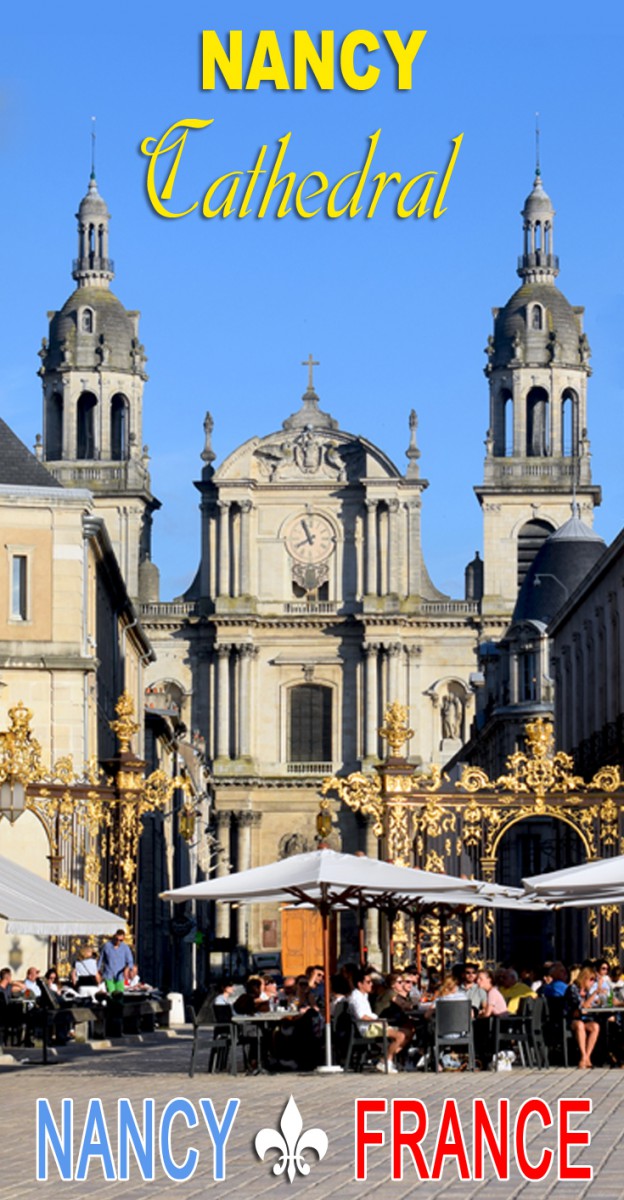
Access to the cathedral is free. The church is opened everyday. Check out the website of the parish church of Nancy Cathedral (Paroisse de Notre-Dame de Bonne Nouvelle) for times of masses.
Check out the website of the Tourist Information Centre for more info about staying in Nancy. You can book your accommodation via their website: check it out here.
Where to stay in Nancy
This map will help you find your accommodation in Nancy according to location and prices:

